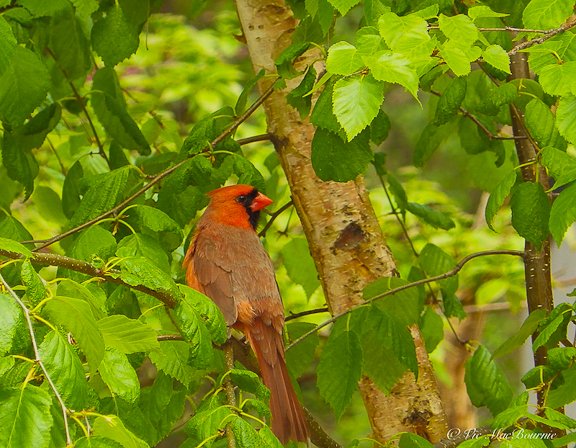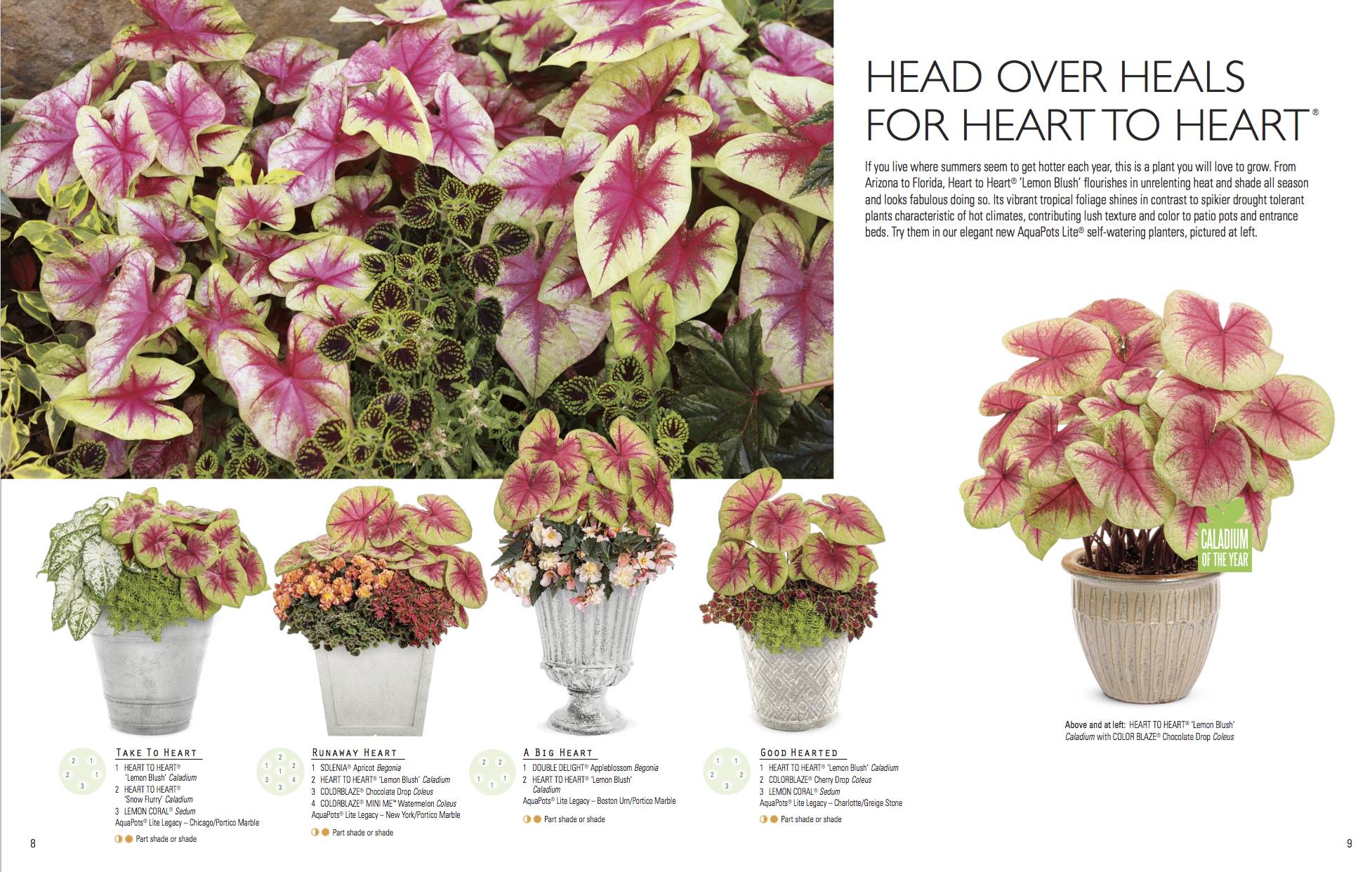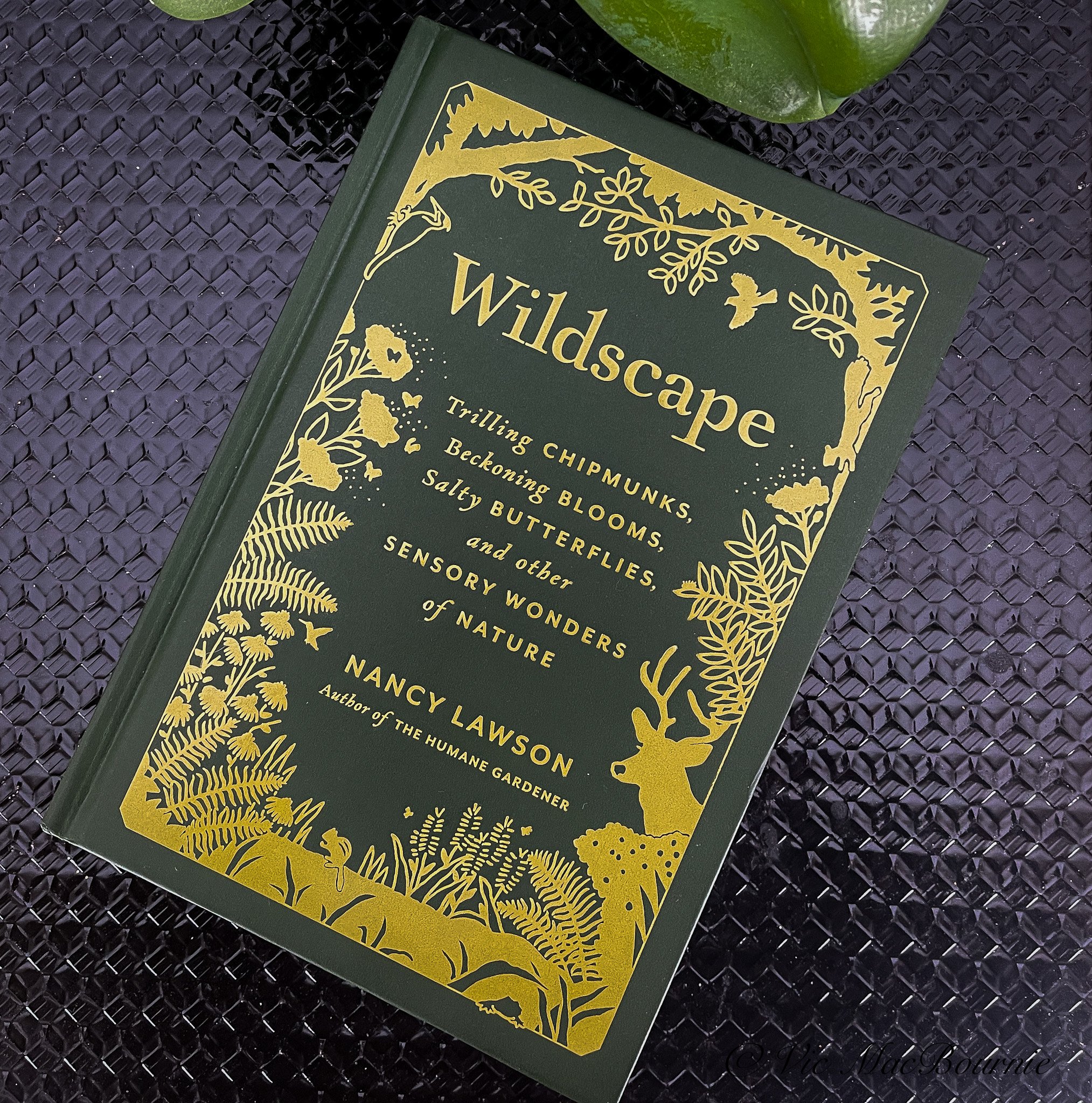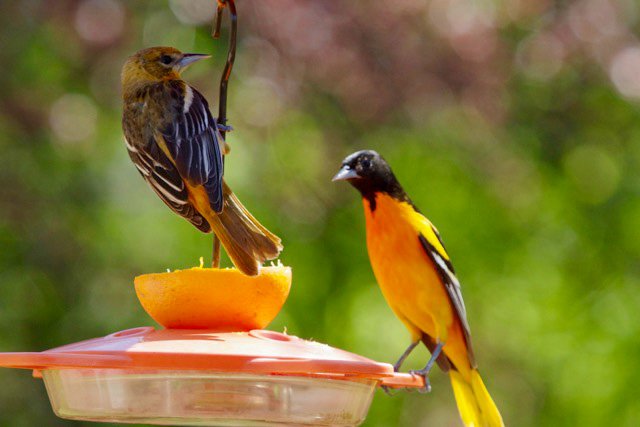
A site for Woodland/Wildlife Gardeners & those who love Photography
Ferns & Feathers is not your average gardening website. If a natural garden means more to you than pretty flowers and you have always had a soft spot for wildlife, then this Woodland/Wildlife Gardening website is meant for you.
My focus is on native plants, trees and shrubs that provide food and habitat for wildlife. Below, you’ll find featured posts on gardening, attracting birds and other wildlife and finally, we’ll focus on backyard garden and wildlife photography.
Why should you spend time on this site? Because a garden without wildlife is just a stage set.
Woodland/Wildlife gardening has been a labour of love for me for more than 20 years. Like all gardens, mine continues to be a work in progress and, like the garden, all are welcome here. Please, join me on my journey.
I am greatly honoured to be the recipient of the Ontario Nature Media and Conservation Award for the work done on Ferns & Feathers and the accompanying newsletter, Naturally Native. Ontario Nature is an outstanding organization that is working hard to protect the environment in our province and one that deserves our complete support.
Intro to woodland Gardening
- Batch1 125
- Batch2 57
- Dogs 1
- Gardenproducts 4
- Budget 12
- Chipmunk 1
- Forest Gardening 2
- Garden gifts 4
- Cuphea 1
- Garden Art 6
- Gardendesign 1
- Baltimore Orioles 3
- Budget friendly 2
- DIY 3
- Garden design 4
- Forest bathing 1
- Ark 2
- Casio 1
- Canon 1
- Bumble bee 1
- Fujifilm X10 1
- Garden Photography 1
- Fox 4
- Garden photography 3
- Epimediums 1
- BBQ 2
- Dogwood 2
- Flowering dogwood 1
- Cornus 2
- Dogwoods 1
- Canadian woodland gardens 1
- Garden 1
- Backyar birds 1
- Foxes 1
- Bird feeding 1
- Birch tree 1
- Fish In The Garden 2
- Birch 1
- Adirondacks 1
- Cedars 1
- Bird photography 2
- Birdwatching 2
- Carolinian canada 1
- Carolininian 1
- Best 1
- Garden cart 1
- Garden solar lights 1
- Forest Pansy 1
- Garden wildlife 2
- Barbecue 1

Gardening & wildlife
- Budget 1
- Carolininan zone 1
- DIY 1
- Fall colour 1
- Ferns 1
- Flower 1
- Garden design 1
- Garden tips 1
- Photography 1
- Wildflowers 1
- Woodland 1
- attract birds 1
- backyard design 1
- batch1 3
- birds 3
- ephemerals 1
- fern garden 1
- ferns 2
- garden on a budget 1
- garden photography 1
- gardening 1
- habitat 1
- mammals 1
- meadow 1
- native plants 7
- native shrubs 1
- native trees 3
- natural garden 1
- nature 1
- nature photography 1
- photography 2
- pollinators 1
- predators 1
- rewild 1
- shade garden 1
- wildflowers 1
- wildlife 5
- wildlife friendly 1
- wildlife garden 2
- woodland 3
- woodland garden 3
- woodland wildlife garden 1

Are you and your garden ready for spring migration and the influx of warblers and other backyard birds from their wintering grounds. Providing the necessities of life is a good start but how do we do that in our gardens?
Evergreens play a key role in the woodland garden creating vertical structure and a strong presence throughout the seasons.
Evergreens are vital for the survival of our backyard birds. Not only do they provide a natural food source, they also create habitat for nesting birds.
Building a Woodland garden can be a fun and rewarding experience. The key is letting go of what you may have perceived as the perfect garden and let nature do much of the work. Your focus should be in establishing layering the site with tall trees, understory trees, shrubs and ground covers. I hope this blog will help you achieve your dream.
Ground covers are an integral part of a Woodland Garden. Ferns form the backbone of our garden both in the front and back yards, but there are many others. Here are three of my favourite ground covers that I use in my garden.
Are woodland gardens a solution to the world’s climate problems? If they are not the solution, they certainly can play an important role.
There should always be some mossy areas in the woodland garden, whether it’s growing on the ground or used in containers or even in a dedicated moss garden.
Gardens seem to be trending in the right direction as more and more gardeners recognize the importance of using native plants to encourage wildlife.
Landscape designer Angela den Hoed shares how she creating an impressive meadow garden in the side yard of her Pennsylvania home to be used a show garden for her landscape design clients. The result is a stunning garden that will slowly evolve each year to become a beautiful meadow garden teeming with insects, bees and other wildlife.
In 1989 Ken Druse wrote The Natural Garden. Was it a groundbreaking book that changed the way we garden today?
Flower photography is always rewarding, but it is especially so when you are photographing flowers in your own backyard that you planted and nurtured over the years.
Catherine Cleary and partner Ashe Conrad-Jones of Pocket Forests are dressed for action. The team is giving Ireland a taste of what life could be if there was more nature.
Spring ephemerals are an important part to any woodland garden both for their early colour and value to native wildlife. Here are 35 woodland wildflowers you will want to consider for your shade/woodland garden.
Rescuing and rehabilitating wildlife is critically important for the survival of so many of our backyard birds, animals, reptiles and amphibians. The dedication and commitment of volunteers is what keeps these wildlife centers working hard to save local wildlife.
The relationship between our garden predators, including backyard birds, and the use of native plants is tied together by the insect herbivores that depend on native plants as a food source. Together the predators, prey and native plants work to keep our gardens in harmony.
Here are six of the best trees for fall colour in your woodland garden. Three are for the upper canopy and three are understory trees. Among the best trees for fall colour include the Sugar Maple, The Oaks and the Tulip Tree, as well as trees in the Dogwood family, serviceberries, and Japanese Maples.
Getting your yard designated a wildlife habitat, or pollinator-friendly yard is a worthwhile endeavour and one that will inspire gardeners to create more an better habitat to help birds, mammals, bugs and butterflies in our gardens. This article provides a resource for anyone thinking about having their gardens designated a wildlife habitat.
Why should we use native trees, shrubs and plants in our landscapes is an important question many gardeners ask. Native plants are vital for the survival of our birds, pollinators and other animals that depend on the food these plants provide. It’s never been more important for gardeners use more native plants and save our environment one garden at a time.
A woodland wildlife garden is the best environmental choice for garden design. Ecologically, a woodland garden using native plants will help to restore native flora and fauna in our urban and suburban areas that are being over run with non-native, exotic plants that are damaging our environment. Here is a design plan complete with a plant list so that everyone can help to save our environment one garden at a time.
Even today's smaller backyards have room to create a native fern garden. Whether you have a small or large backyard, a fern garden will bring a sense of solitude to your woodland wildlife garden. These garden tips and ideas will help beginners and experienced gardeners plan, design and create the perfect fern garden in a corner of their yard to attract birds and other backyard wildlife.
Is picking or digging up wildflowers and other plants from the wild wrong. According to experts in the field, it is almost always the wrong thing to do. Even collecting seed from rare plants can be a bad decision, especially if approval is not sought from the landowners in advance. Ferns and Feathers asks the experts what they think about collecting plants from the wild and what are alternatives.
A beginners guide to backyard wildlife photography exploring how to attract birds and animals to your woodland garden, how to use get close to them and what camera systems to consider to capture images of birds, insects, butterflies, and mammals.
Putting up a bird feeder and hoping for the best might not be the most successful approach to attracting the greatest varieties of birds to our yards. Many birds are primarily insect- or berry-eating birds and will not readily come to your feeders. Consider adding these native plants, shrubs and trees to ramp up your birds.
What tree should I plant in my garden? A question heard often in on-line forums and nurseries everywhere. The simple answer: Plant an oak tree. Its everything you want in a tree – solid, stately and it feeds, protects and is home to more forest creatures than any other tree you could plant. There is room in every garden design for an oak, and if you think there isn’t think again. Here are four great oaks to consider.
Creating a garden of your dreams can be expensive, especially if you’re young with children and in your first home. The good news is that you have time to create that woodland, cottage or contemporary garden on a budget you can afford. The keys to a successful landscape plan are patience, the willingness to get your hands dirty and learning the money-saving tips to get you on the right path.
If you have the basis for a woodland garden, you are on your way to creating a wildlife garden in your backyard. The two landscape designs work in harmony but there are specific elements to focus on to create a successful wildlife garden.
Sharing our garden with our woodland friends is one of the more satisfying parts of creating a woodland garden landscape design. Most often we are not aware of the ongoing life and death struggles in our backyards. As woodland gardeners, we experience the ups and downs that comes with trying to protect our furry friends. Here are Tips and ideas on how we can keep our woodland creatures safe.
Winter is never easy for backyard birds. Thankfully there are steps we can take to help our feathered friends get through the worst winter has to offer. In return they just might provide us with some exceptional photographs.
The above posts are an introduction to the Woodland website. For more, click on any of the links below.
Foliage is an elegant oversized coffee table book featuring the beautiful images of master photographer Harold Feinstein.
Growing hardy Yellow Ladyslippers can be difficult, but the rewards are well worth it.
The Garden is Canadian photographer Freeman Patterson’s tribute to his garden in Shamper’s Bluff, New Brunswick where he combines his passion for nature with his love of gardening and photography.
Why not try your hand at taking environmental portraits in nature? Try telling a story rather than moving in too close and put those wide angle lenses to work.
A misty morning in late spring with freezing rain still clinging to some of the trees and rural fences captured with the Sigma DP2 and its excellent, built-in 42mm (35mm) lens.
CCD-sensor cameras have developed a bit of a cult following now that working copies are getting harder and harder to find. The Pentax *ist-D is an example of an excellent CCD camera that continues to deliver in its old age.
Nothing says spring quite like tulips, daffodils and a range of colourful spring bulbs. There are lots of ways to experience tulip festivals from local events to European river cruises to Amsterdam, the motherland of tulips.
The Pentax PZ1-p was the flagship of the lineup in the 1990s when autofocus swept the market and technology began to influence the design of all cameras. Today, these cameras are some of the most inexpensive film cameras on the market, yet they are among the most modern technological masterpieces available.






















































































































































Adding a few native plants to your garden every year will go a long way to building the landscape of your dreams.